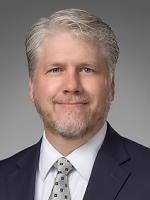In its decision in Upland Community First v. City of Upland, the Fourth District Court of Appeal upheld a Mitigated Negative Declaration (MND) for the development of a warehouse and parcel delivery service building against a challenge primarily to its greenhouse gas (GHG) emissions thresholds. In doing so, the Court provided a rare victory for a challenged MND while reaffirming local agency discretion in selecting appropriate quantitative thresholds of significance for GHG emissions under the California Environmental Quality Act (CEQA).
Background
Several years ago, Bridge Development Partners, LLC (Bridge) applied for project approvals for development of a 201,096 square-foot warehouse and parcel delivery service building on a site used for rock and gravel crushing near Cable Airport in the City of Upland, San Bernardino County. The City elected to satisfy its CEQA mandate to analyze the environmental impacts of the project via an initial study and MND. An MND can be used when a project may have a significant environmental impact, but the impact can be mitigated to a level of insignificance. However, the standard of review for an MND is lower than for an Environmental Impact Report (EIR). An MND’s standard of review is whether there is substantial evidence in the record to support a “fair argument” that the project may have a significant effect on the environment. This lesser standard of review can sometimes lead to petitioners overturning a project approval until an EIR can be processed.
In the MND’s analysis of the project’s cumulative impacts on GHG emissions, the City chose an initial threshold of 10,000 metric tons of carbon dioxide equivalent per year (MTCO2 e/yr) (the 10,000 threshold). However, during public review of the draft MND, commenters argued that the 10,000 threshold was improperly used, as the threshold is appropriate only for large industrial projects with primarily stationary-source GHG emissions. As a parcel delivery and warehouse building, the project would instead include primarily mobile-source GHG emissions (i.e., trucks). As asserted by the public commenters, the South Coast Air Quality Management District (SCAQMD) recommends a threshold of 3,000 MTCO2 e/yr (the 3,000 threshold) for non-industrial projects, including commercial and mixed-use projects.
In response to these public comments, the City subsequently analyzed the 3,000 threshold in a supplemental GHG analysis to the MND. The supplemental GHG analysis also increased the estimated existing emissions baseline from the rock and gravel crushing operations from 899 MTCO2 e/yr to 2,437 MTCO2 e/yr because the emissions from truck trips related to the rock and gravel crushing operations had been left out of the GHG baseline used for the draft MND. The project developer also revised the project to add various sustainability features, such as solar panels, EV-charging stations, and landscaping. The supplemental GHG analysis found that the project would generate 2,904 MTCO2 e/yr—below the 3,000 threshold—when factoring in the increased emissions baseline and project sustainability features. In April 2020, the City approved the project and adopted the MND.
Challenge
After the City adopted the MND, Upland Community First (UCF) filed a petition for writ of mandate, asking the trial court to order the City to set aside the MND and associated project approvals, even though the City used the 3,000 threshold petitioners had recommended. UCF made several claims that the project violated CEQA because a fair argument could be made that the project would have significant impacts on GHG emissions, traffic, and air quality. UCF argued that the City should prepare an EIR for the project.
The trial court granted UCF’s petition solely on the grounds that insufficient evidence supported use of the 10,000 threshold and 3,000 threshold. In its order, the trial court directed the City to set aside its resolutions approving the MND and other project approvals. UCF and Bridge both appealed, with the City joining Bridge’s brief. Bridge claimed that substantial evidence supported the City’s use of both the 10,000 and 3,000 thresholds. UCF claimed that the City undercounted vehicles and trips the project would generate, and therefore, substantial evidence supported a fair argument that the project would still have significant impacts on traffic, transportation, air quality, and GHG emissions over the 3,000 threshold.
Decision
The Court of Appeal rejected UCF’s arguments and reversed the trial court’s judgment. First, the Court pointed to several cases that hold that a lead agency has substantial discretion to determine appropriate thresholds of significance, which will be upheld if the threshold is based on substantial evidence. In other words, the fair argument standard does not govern the selection of the threshold methodology in an MND. The Court then found that substantial evidence was in the administrative record in the form of SCAQMD’s recommended use of the 3,000 threshold for all non-industrial projects, as well as the SCAQMD’s reasoning for application of the 3,000 threshold for such developments. Lead agencies are permitted to rely on the threshold recommended by experts and other agencies.
Next, the Court rejected UCF’s argument that the City’s increase in the emissions baseline for the rock and gravel crushing operations was unsupported. Although the supplemental GHG analysis did not explain why the City increased the baseline, the Court reviewed the circumstantial evidence in the administrative record and concluded that the increase resulted from the 78 trucks used in the existing operations on the project site, which were conservatively excluded from the draft initial study.
Finally, the Court rejected UCF’s argument that the initial study severely understated the number of vehicles and vehicle trips the project would generate. The Court found evidentiary support for the traffic impact analysis via the City traffic engineer’s expertise and reasoning. The Court also held that UCF’s arguments based on level of service (LOS) analysis were moot because California replaced LOS with vehicle miles traveled (VMT) analysis in 2020. Therefore, the City would not be required to perform an updated LOS analysis on remand. UCF also argued that the City abused its discretion by not conducting a VMT analysis. However, the court disagreed. The City did provide a VMT analysis for informational purposes that was not addressed by UCF. Therefore, UCF did not exhaust its administrative remedies related to challenging the VMT analysis.
Implications
Perhaps the most significant implication of Upland Community First is the reassurance that MNDs can be upheld, despite the difficult-to-defend “fair argument” standard, when the dispute is over the methodology for selecting the significance threshold. While Upland may not open the floodgates to local agency use of MNDs when weighing a close call between an MND and EIR, lead agencies that use an MND are wise to characterize challenges to the project as a mere dispute over the methodology for selecting the significance threshold.
Upland Community First also serves as another reminder of the importance of the administrative record. The Court was only able to make its findings because of the robust evidence available to it, including support for the traffic impact analysis and the GHG 3,000 threshold. Even when the City did not indicate why it increased the baseline for existing GHG emissions at the project site, the Court was able to trace the cause through the evidence in the administrative record. However, some courts will not sift through the record for that technical evidence, so it is still advisable to document an updated baseline in the body of the MND.
More substantively, Upland Community First reaffirms the discretion local agencies possess in selecting appropriate quantitative thresholds of significance for GHG emissions. Unfortunately, Bridge failed to timely raise its alternative argument that the project’s GHG emissions were less than significant based on a qualitative, performance-based standard; specifically, that the project’s features are consistent with the City’s 2015 Climate Action Plan. Although this argument may or may not find limited support in existing case law, students of CEQA will have to wait for a future case to flesh it out.
In addition, given that many public agencies still use the 10,000 threshold, students of CEQA will have to wait for a future case to determine if that threshold can be used outside of a stationary source project because the Court found no need to rule on the adequacy of the 10,000 threshold after finding the project satisfied the evidence-supported 3,000 threshold. The 3,000 threshold can be a difficult significance threshold for a project to satisfy outside of a redevelopment project scenario, where the existing operations at the project site already generate significant baseline levels of GHG emissions.
Finally, the case is both an example of CEQA working and not working. On the one hand, CEQA worked because the public comment period on the draft MND caused the City and the applicant to double down on the project’s sustainability features (mainly rooftop solar panels and EV-charging stations), which are becoming more popular in warehouse projects. On the other hand, CEQA did not work because, despite the additional sustainability features and use of the petitioner’s recommended GHG threshold, the project opponents still sued after it was approved in 2020. The courts did not resolve the matter until 2024, denying the public the benefits of a sustainable warehouse project for at least four years.
To the extent the California Legislature is looking to improve the balance of CEQA’s benefits against CEQA’s abuses, it could look to incentivize applicants and public agencies to make project improvements by reforming CEQA’s recirculation requirements, which currently trigger a second round of public comments on a draft MND or EIR for a project that will already be subject to public comments during public hearings on the project’s entitlements. Lead agencies and applicants should be rewarded for improving a project’s environmental analysis or reducing a project’s environmental footprint, not punished with further project delays.




 />i
/>i

